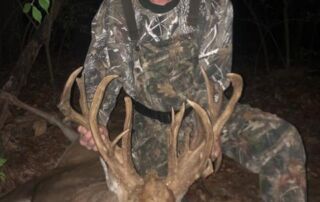Update: Should You Eat a Deer with CWD?
Deer hunters have been wondering, and some have been worrying about it, for many years. Here's the latest on Chronic Wasting Disease: In a recent experiment at Rocky Mountain Laboratories in Montana, scientists tried to contaminate “human cerebral organiods,” or tissues that closely resemble human brain tissue, with injections of Chronic Wasting Disease, which has been documented to infect deer in 35 states and 5 Canadian provinces. For a week the researchers exposed the imitation brain tissues to high concentrations of CWD from 3 different sources. Good news, in ongoing testing, no infection! Yet another scientific finding that CWD does not jump from an infected animal to a human. BUT does this mean it is okay to eat a deer [...]





